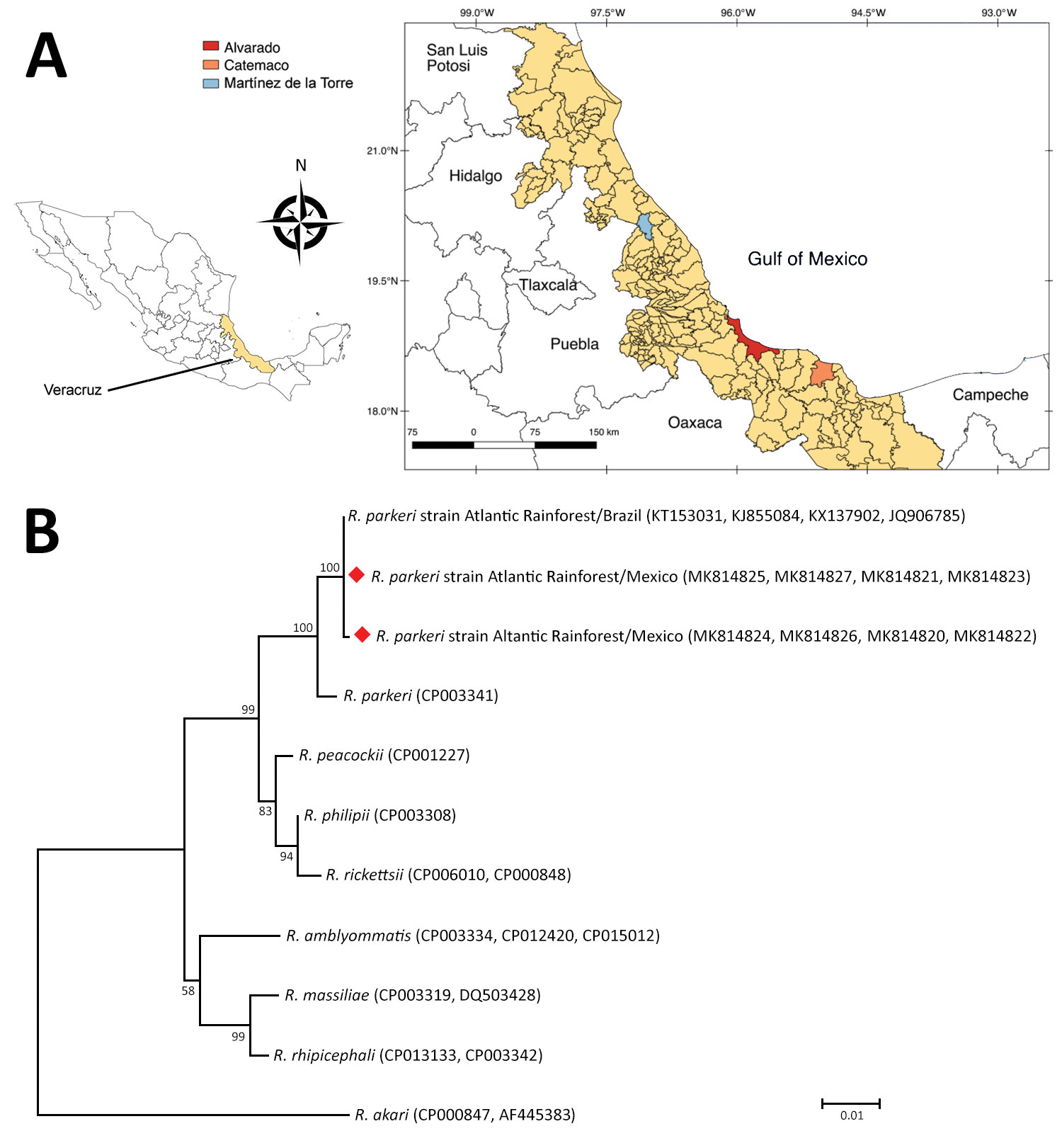Molecular Confirmation of Rickettsia parkeri in Amblyomma ovale Ticks, Veracruz, Mexico
Sokani Sánchez-Montes, Gerardo G. Ballados-González, Alejandra Hernández-Velasco, Héctor M. Zazueta-Islas, Marlene Solis-Cortés, Haydee Miranda-Ortiz, Julio C. Canseco-Méndez, Edith A. Fernández-Figueroa
1, Pablo Colunga-Salas, Andrés M. López-Pérez, Jesús Delgado-de la Mora, Jesús D. Licona-Enriquez, David Delgado-de la Mora, Sandor E. Karpathy, Christopher D. Paddock, and Claudia Rangel-Escareño
1
Author affiliations: Universidad Nacional Autónoma de México, Mexico City, Mexico (S. Sánchez-Montes, H.M. Zazueta-Islas, M. Solis-Cortés, E.A. Fernández-Figueroa, P. Colunga-Salas, A.M. López-Pérez); Universidad Veracruzana, Veracruz, Mexico (G.G. Ballados-González, A. Hernández-Velasco); Instituto Nacional de Medicina Genómica, Mexico City (H. Miranda-Ortiz, J.C. Canseco-Méndez, E.A. Fernández-Figueroa, C. Rangel-Escareño); University of California, Davis, California, USA (A.M. López-Pérez); Instituto Nacional de Ciencias Médicas y Nutrición Salvador Zubirán, Mexico City (J. Delgado-de la Mora); Centro Médico Nacional Siglo XXI, Mexico City (J.D. Licona-Enriquez); Instituto Tecnológico de Sonora, Sonora, Mexico (D. Delgado-de la Mora); Centers for Disease Control and Prevention, Atlanta, Georgia, USA (S.E. Karpathy, C.D. Paddock)
Main Article
Figure

Figure. Amblyomma ovale tick sampling sites and phylogenetic analysis of tickborne Rickettsia parkeri strain Atlantic Rainforest isolates (diamonds), state of Veracruz, Mexico, July–August 2018. A) Sites where A. ovale ticks were collected from dogs to assess prevalence of R. parkeri strain Atlantic Rainforest. Inset shows location of Veracruz state in Mexico. QGis (https://www.qgis.org) was used for map construction. B) Maximum-likelihood phylogenetic tree generated with concatenated segments of the gltA, htrA, sca0, and sca5 genes (2,476 bp total) of several members of spotted fever group Rickettsia. Bootstrap values >50 are indicated at nodes. GenBank accession numbers are provided. Scale bar indicates nucleotide substitutions per site.
Main Article
Page created: November 18, 2019
Page updated: November 18, 2019
Page reviewed: November 18, 2019
The conclusions, findings, and opinions expressed by authors contributing to this journal do not necessarily reflect the official position of the U.S. Department of Health and Human Services, the Public Health Service, the Centers for Disease Control and Prevention, or the authors' affiliated institutions. Use of trade names is for identification only and does not imply endorsement by any of the groups named above.
